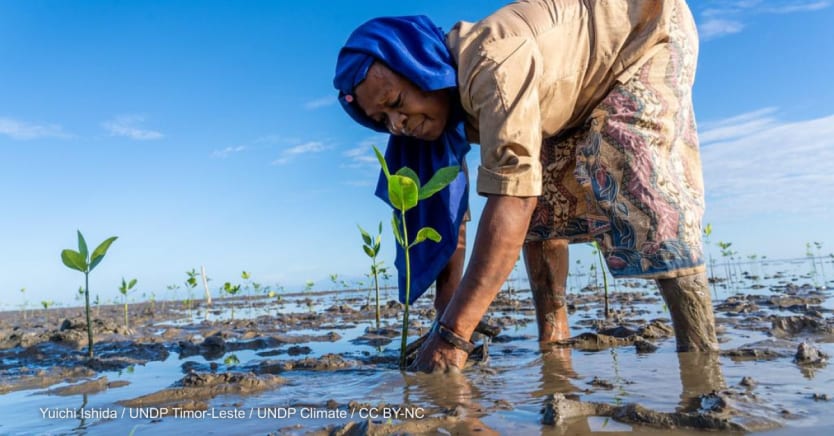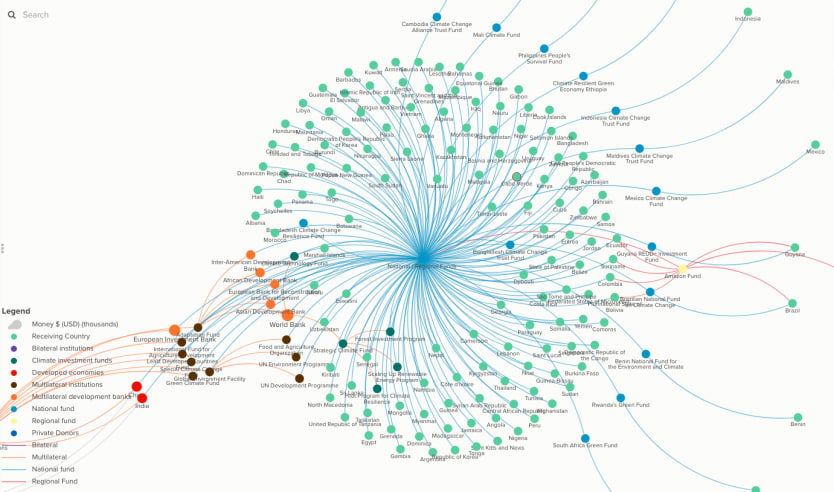
It is conceivable that 2021 will be remembered as the year we reached a climate action tipping point — and not a moment too soon. Record-breaking heat waves from North America and Western Europe to the Middle East, Africa, and Asia are impossible to ignore. A devastating Intergovernmental Panel on Climate Change report confirmed that human-generated greenhouse gas emissions are principally to blame for rising global temperatures.
Yet as bad as things appear, massive fires in the Pacific Northwest and Siberia and floods hammering Europe and China are a preview of what is coming, with the poorest and most vulnerable worst affected.
The causes of climate change are no longer disputed. All climate scientists agree that radical mitigation and adaptation measures are needed to keep global temperatures from rising above 1.5 degrees Celsius.
With COP 26 next month, climate activists are demanding that governments declare a “climate emergency” and speed up measures to reduce carbon emissions. The private sector is likewise urging authorities to cull the use of fossil fuels: over 470 investors overseeing trillions in assets and activist shareholders are urging action — as they should.
Our failure to rein in global greenhouse gas emissions is deadly. Already, almost 9 million people die each year as a result of smog and pollution. Tens of millions are being displaced by climate change with those figures projected to soon rise to hundreds of millions.
Even if greenhouse gas emissions and global warming are slowed down in the coming decades, the world will still experience more frequent and extreme weather events along with rising seas and storm surges. Dramatic reversals now could lessen these effects.
Climate change is also profoundly unjust. Shocks and stresses exacerbate global economic inequality and disproportionately affect those who are the least responsible for emissions to begin with. The top 10 greenhouse gas emitters are responsible for more than two-thirds of all global emissions.
The top three polluters — China, the European Union, and the United States — generate 41.5% of all global emissions, 16 times what is generated by the bottom 100 countries. Just 100 companies, virtually all of them in the oil, gas, and coal sectors, generated more than 70% of all greenhouse emissions between 1988-2015.
Low- and lower-income countries generating negligible emissions bear the brunt of climate change. Consider the Horn of Africa, which can experience the greatest increase in heatwaves days. Rising sea levels and tropical storms may drown small island developing states.
Deadly monsoons are ravaging swathes of South Asia, triggering the worst floods in decades. As the world warms, breadbaskets such as Argentina and Brazil are facing droughts disrupting food supply chains and exacerbating fires.
A persistent challenge is the deficit of funding and difficulties of some governments to absorb new funds, should they arrive.
—Wealthier countries and companies that are driving climate change share an obligation to support and invest in solutions for those most adversely affected. Their moral responsibility was codified in the early 1990s when 154 countries signed the United Nations Framework Convention on Climate Change.
Article 11 of the convention established a financial mechanism to channel resources from high-income to lower-income countries. It first entrusted stewardship of this process to the Global Environmental Facility, an independent entity mandated to provide grants to help lower-income countries meet their international commitments.
In order to nudge climate financing forward, the 2009 Copenhagen Accord called on wealthier countries, development banks, and companies to commit at least $100 billion a year by 2020 to support mitigation and adaptation measures in poorer ones by 2020.
In 2011, the accord launched a Green Climate Fund to direct investment toward low-emission and climate-resilient development. It has already issued roughly $9 billion in support. Even so, the aspirations of both the accord and GCF have fallen far short of what is needed.
Wealthier countries have not paid their fair share to speed-up mitigation and adaptation. Among G-7 countries, lead investors — in terms of their gross domestic product — include Germany, Japan, France, followed by the United Kingdom, Canada, U.S., and Italy.
Collectively, these countries have committed under $80 billion a year from 2013-2018, less than what was promised. Most of their climate financing was in the form of loans, and not grants. Public financing is currently outpaced by private financing. Yet even the combined input of public and private actors is still insufficient.
Notwithstanding climate financing shortages, many countries in the developing world are ramping-up mitigation. Costa Rica, which already runs on 99% renewable power, is considering a permanent ban on new oil and gas exploration and Morocco is one of a few lower-middle income countries on track to achieve its Paris Agreement targets.
Mexico recently launched a National Strategy to reduce emissions by 2030 while Malaysia is doubling down on its transition to clean power to achieve 40% renewable energy by 2035.
Interactive and real-time maps can help policymakers better assess global needs, follow the money, and turn climate change awareness into climate action.
—Multilateral efforts are also underway to scale adaptation programs. The World Bank’s City Climate Finance Gap Fund is working with the Democratic Republic of Congo, Kosovo, and Mexico, to mention a few, to build city resilience. And in the Sahel, The Great Green Wall includes an $8 billion plant to reforest almost 250 million acres of land stretching between Dakar and Djibouti and could absorb up to 250 million metric tons of carbon dioxide.
A persistent challenge is the deficit of funding and difficulties of some governments to absorb new funds, should they arrive.
One way to help better understand the climate financing architecture is by mapping the ecosystem of public and private actors involved. Climate finance is bewildering to the uninitiated. Complementing the work of the Climate Funds Update and the World Resources Institute, a new visualization from Igarapé Institute helps reveal the constellation of bilateral, multilateral, and private actors involved.
By visualizing climate finance networks across 45 wealthy countries, 143 countries in the developing world, and 65 financial institutions, it is easier for investors to supercharge impact hubs — clusters of governmental and private investors.
This year, G-7 countries renewed their agreement to meet the $100 billion commitment every year until 2025. More than 450 financial institutions pledged to finance a “green recovery” for the world’s poorest countries, though details are not clear.
The U.S. also announced its intention to double climate financing by 2024 while the European Commission and the Inter-American Development Bank vowed to double their spending as well. The IPCC underlines the importance of equity and ethics in climate financing and the issue will be high up on the COP 26 agenda.
Visualizing the climate finance ecosystem
Currently, the largest government investors in absolute terms are China, U.S., India, and Germany. Meanwhile, the private sector is outspending the public sector. Between 2013 and 2018, private corporations accounted for the most private climate capital, well ahead of development banks and individual donors.
Between 2017 and 2018, for example, private climate donors invested an average of $326 billion — with 85% going to renewable energy — compared with $253 billion from the public sector.

Today, most bilateral public contributions are channeled through multilateral entities, which in turn serve as connectors to regional and national funds in lower-income countries. Getting a handle on exactly how much is spent and to what end is tricky.
One exception is the GCF which works with over 200 financial entities to advance pro-environment initiatives. Its combined spending on 37 projects in 77 countries reached $4.9 billion in 2020. Likewise, the World Bank’s Climate Investment Fund is transparent about how funds are distributed.
Tools to improve awareness of the scope and scale of climate finance architecture can focus minds. As more private companies sign up — over 200 companies have recently signed a Climate Pledge to deliver net zero emissions by 2040 — investments in climate change mitigation and adaptation will keep growing. While information gaps persist, interactive and real-time maps can help policymakers better assess global needs, follow the money, and turn climate change awareness into climate action, especially in the global south.










